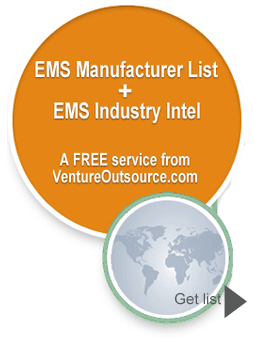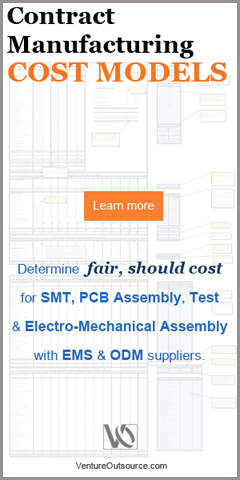The international community has increased their focus on conflict minerals tin, tantalum, tungsten and gold (3TG) that are mined from the Democratic Republic of the Congo (DRC) and adjoining countries. Rebel militia groups target to control Congo’s precious mines and use the money generated from mineral sales to finance regional conflicts. These conflicts have already claimed the lives of over 5 million civilians and forced some 3.4 million to flee their homes.
The US government’s intervention, via a Securities and Exchange Commission (SEC) regulation amid various international social and government organizations working together to increase the awareness of these conflicts, enacted legislation requiring public companies to provide disclosures about the use of conflict minerals emanating from the Democratic Republic of Congo (DRC) and nine adjoining countries.
This act was signed into law July 21, 2010 and amends section 13 of the SEC act of 1934. After much public debate, on August 22, 2012, the SEC issued a final rule on filing conflict mineral reports to implement the new disclosure requirements.
Electronics providers in your search results will offer electronics regulatory compliance services. You will be able to further target your options from the results page.
Electronics industry impact
As many electronics decision makers reading this might already know of you, 3TG minerals are essential materials in the manufacture of various electronics components such as passives, connector headers, connector card edges, crystals, oscillators, semiconductors, optoelectronics and displays.
These electronic components are used in your company’s consumer electronics, telecommunications equipment, smartphones, computers and other technology products.
What might be common knowledge to most, it is now the prime responsibility of your business’ hi-tech supply chain, and sourcing chains of any other organizations where there is impact, to access the sourcing of these 3TG minerals and ensure conflict minerals are not part of the products you purchase, sell or use.
As per the final amendment to the SEC rule, this new standard requires your business file periodic reports disclosing the use of conflict minerals in your products to the SEC.
To meet compliance your business must establish the following system:
- Define your process for conducting due diligence with all your suppliers to validate minerals utilized in your product and the sources of the minerals.
- Setup IT infrastructure to manage the supplier communication, gather evidence data from your suppliers, validate the sources of minerals and generate required reports.
- Assign a dedicated cross-functional team to carry out the due diligence and generate the compliance reports.
Your compliance process must connect your organization’s multi-tier supplier base and be able identify the sources of minerals; aggregate these reports gathered and analyze them to validate the sources of conflict minerals used in your products.
You must collect the reports from suppliers using the template from the Electronic Industry Citizenship Coalition (EICC), which is internationally accepted as a common template across industries. (See, more on conflict materials at the EICC Website, and at Conflict-Free Sourcing Initiative, founded by members of the EICC and the Global e-Sustainability Initiative)
Education and challenges
You must also educate suppliers in your supply chain about the process; provide local language support so that accurate responses are obtained, and rigorously follow-up to get the data on time.
Challenges that businesses must consider include:
- Multiple levels of suppliers between extraction of raw materials and the final product or finished goods inventory (FGI)
- Dedicated effort to work with suppliers to collect, follow-up and validate the data.
- Additional IT infrastructure for process management.
- Potential loss of market share if compliance data is not reported.
A functional checklist is below for helping create (or validating), your IT infrastructure capabilities to better manage your 3TG compliance process.
Your bare minimum objectives might include having a system capable of analyzing the data collected from each vendor or supplier and getting the required clarification from all suppliers, whether primary, secondary or tertiary to conclude the source of supply.
To expedite this process, I recommend your IT system have the following features.
- Mass data import / export (multi-level BOM loading, with exploding)
- Automatic e-mail survey (EICC template) with all suppliers
- Multi- language options (w/ local language capabilities)
- Unlimited data repositories (to maintain repositories)
- IP protection (maintains data confidentiality)
- Active processing / management of any ‘open’ issue to validate conflict minerals status
- Automated data analysis and report generation
In your search results, you can further target provider options.
Annual reporting and SEC filing
The final outcome of the compliance minerals process will be one of the following and will need to be filed with the SEC before May 31 every calendar year:
1) DRC conflict free: The product does not require conflict minerals, is not sourced from DRC or adjoining countries and minerals are not sourced from scrap or recycled sources.
2) DRC conflict undeterminable: Following due diligence, conflict mineral status of products manufactured (or contracted to electronics manufacturers) is undeterminable. Your businesses can take 3 to 5 years to determine the status, and file reports with the SEC in subsequent years.
3) DRC conflict mineral: Sources of minerals used in your product(s) that originate from DRC (or adjoining countries) and not from any recycling or scrape sources. You (or your electronics manufacturer) are using ‘conflict minerals’. Your SEC report must include a description of the measures taken by your company to exercise due diligence on the source of the conflict materials, including chain of custody.
Your company must exercise due diligence, study the source and chain of custody of conflict minerals using nationally or internationally recognized frameworks, report the following details in disclosure documents with the SEC, and also report the same on your company Website, including:
- A description of the products (manufactured by your or your EMS / ODM contractors) containing conflict minerals originating from the DRC or adjoining country.
- List the name of the entity that conducted the audit.
- Include a description of the facilities used to process the conflict minerals
- The country of origin of the conflict minerals
- A description of the efforts employed by the reporting company (your firm) to determine the mine or location of origin of the conflict minerals — with the greatest possible specificity.
As per SEC regulation, it is mandatory for every electronics manufacturer in the US to conduct well-structured due diligence, access source of minerals used in their products, and report the conflict mineral disclosure on or before May 31 every calendar year.
Doing so will help you and your company avoid potential disruptions to your supply chain and other business risks, and most importantly you will be helping to protect human lives in the DRC and adjoining countries.
Efforts to comply with SEC regulatory requirements on time will not only help electronics manufacturers with regulatory compliance, but also lead to superior supply chain management, and benefit the greater global electronics industry as the compliance process enhances supply chain clarity for everyone.
Get list of EMS manufacturers for your requirements (Its free)
Save time and money. Find quality EMS manufacturers. Fast. Venture Outsource has a massive, global database of contract electronic design and manufacturing capabilities. Speak with a Provider Advisor.
“Was able to very quickly find details on the important elements of setting up EMS and ODM partnerships, talked with an advisor for personalized info on quality providers matching our requirements while getting up to speed quickly about the industry and connect with key staff from like-minded companies and potential partners. Great resource.”
— Jeff Treuhaft, Sr. Vice President, Fusion-IO
Advisors tell you matches we find for your needs, answer your questions and, can share EMS industry knowledge specific to your industries and markets.








